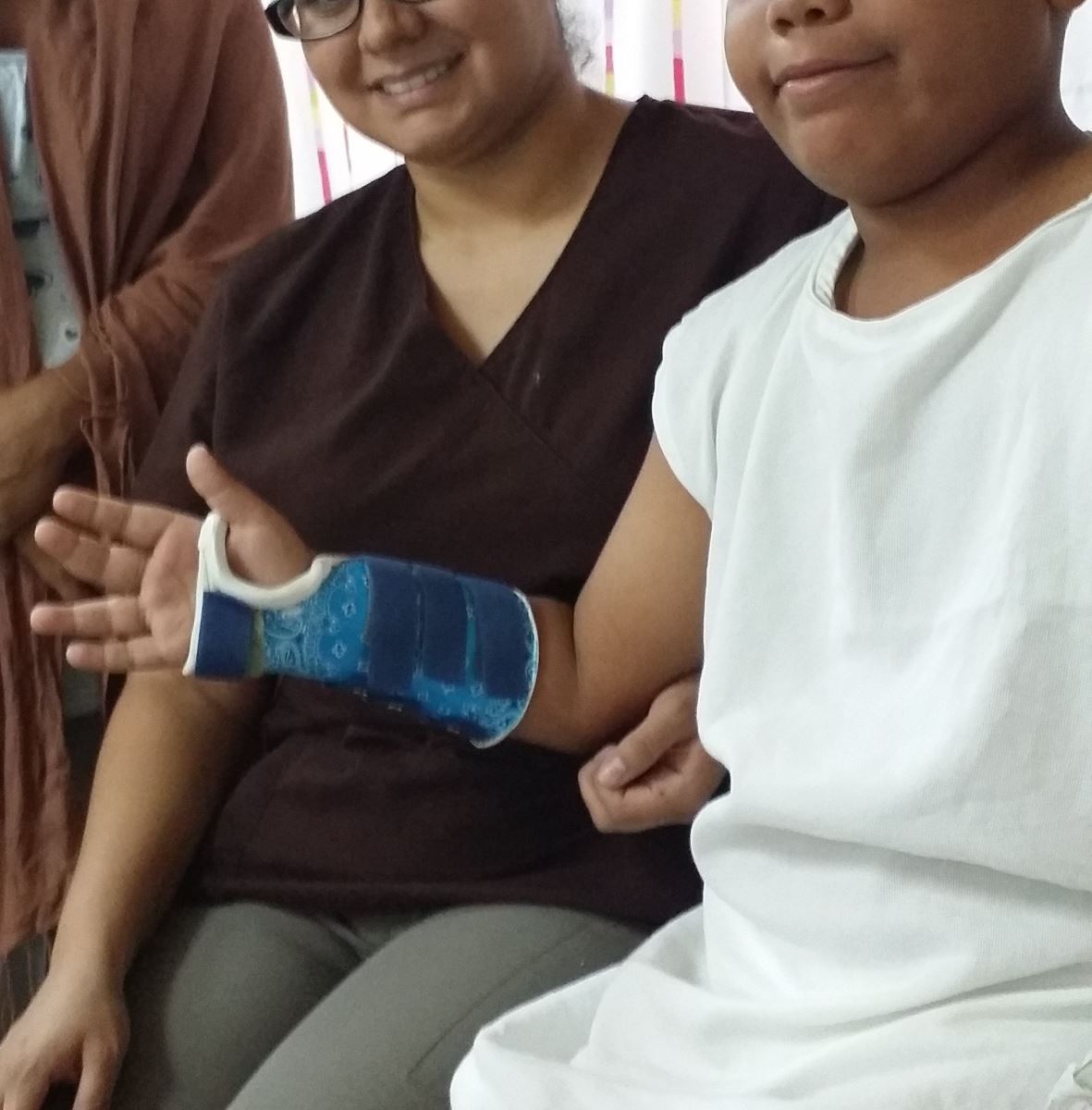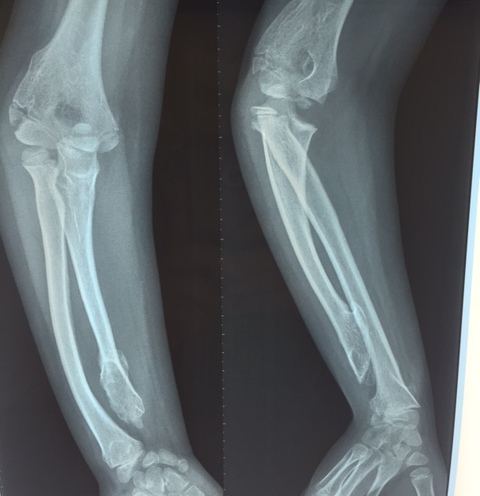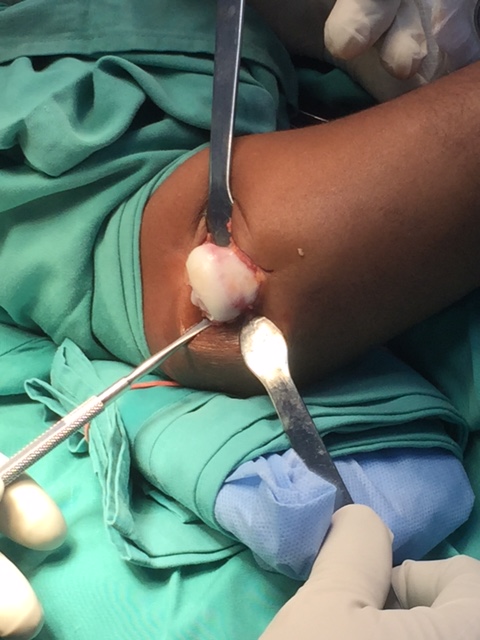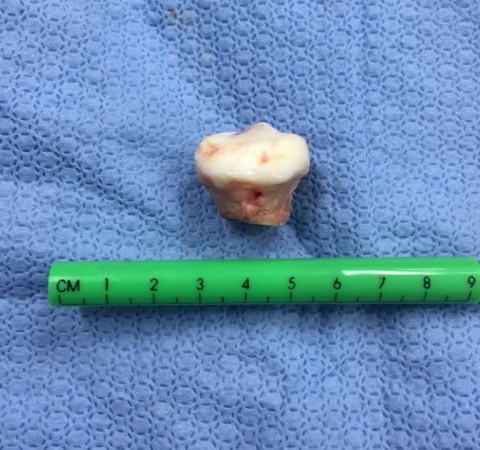SURGICAL OPTIONS FOR DISLOCATING RADIAL HEAD INCLUDE:
- Osteotomy of the ulna
- Reconstruction of the annular ligaments
- Osteotomy of the radius
- Combination of osteotomy and ligament reconstruction
- Excison of the radial head
- Radial head reconstruction
- Shortening of the proximal radius
Case Example:

During Diego’s physical exam, he expressed chronic right elbow pain during elbow motion to be his primary reason to see a doctor. Diego’s family only earns $2.00 per day, therefore it is very important that Diego can get a job when he completes his education.
The X-Ray reveals much more than a congenital dislocating radial head. A combination of congenital deformities is common to find during the exam process. Diego also has exostosis (benign outgrowth of new bone from the surface of bone), an abnormal distal ulna, and radial bowing. Many children with congenital deformities have multiple issues and conditions simultaneously. Often it is necessary for these children to have staged or multiple surgeries.
The pediatric orthopedic surgeon felt that excison of the radial head for the treatment of his dislocating radial head was Diego’s best surgical option at this time. Diego will require future surgeries as well.
Diego’s radial head did not form properly. The radial head is normally cylindrical with a shallow cup on the upper surface. The normal cup shape is important for the articulation of the head of the radius with the capitellum of the humerus. The head of the radius should also be smooth.
Time to Play the Brain Game:
Q) What is the main limitation for those individuals with radial head dislocation?
A) Rotation is often limited and activities the require supination are difficult. They may also complain of “elbow popping”.

The surgeon requested a long custom wrist support for Diego to wear after his cast was removed.
Diego was very happy after the surgery because his elbow pain was much improved.



